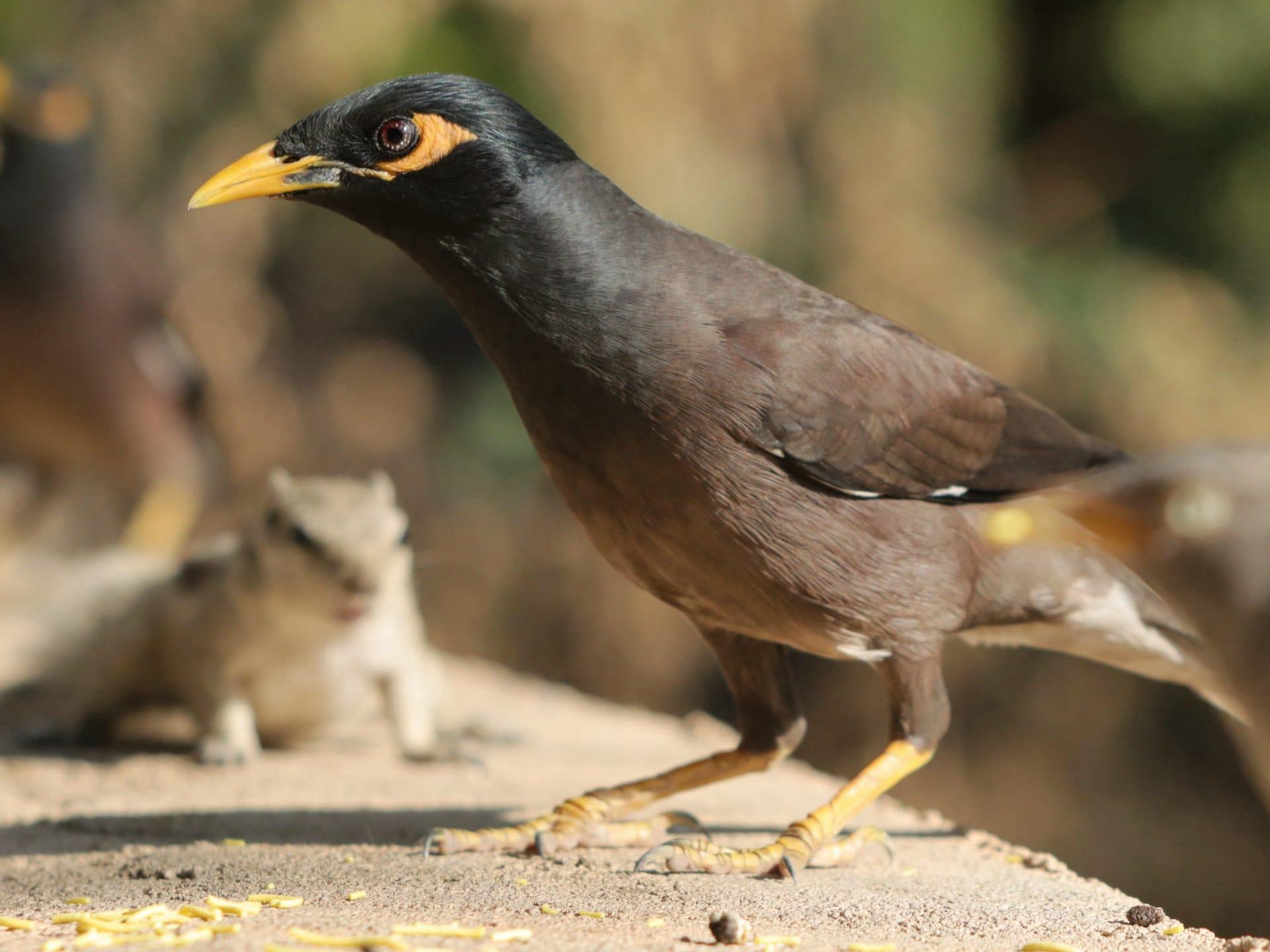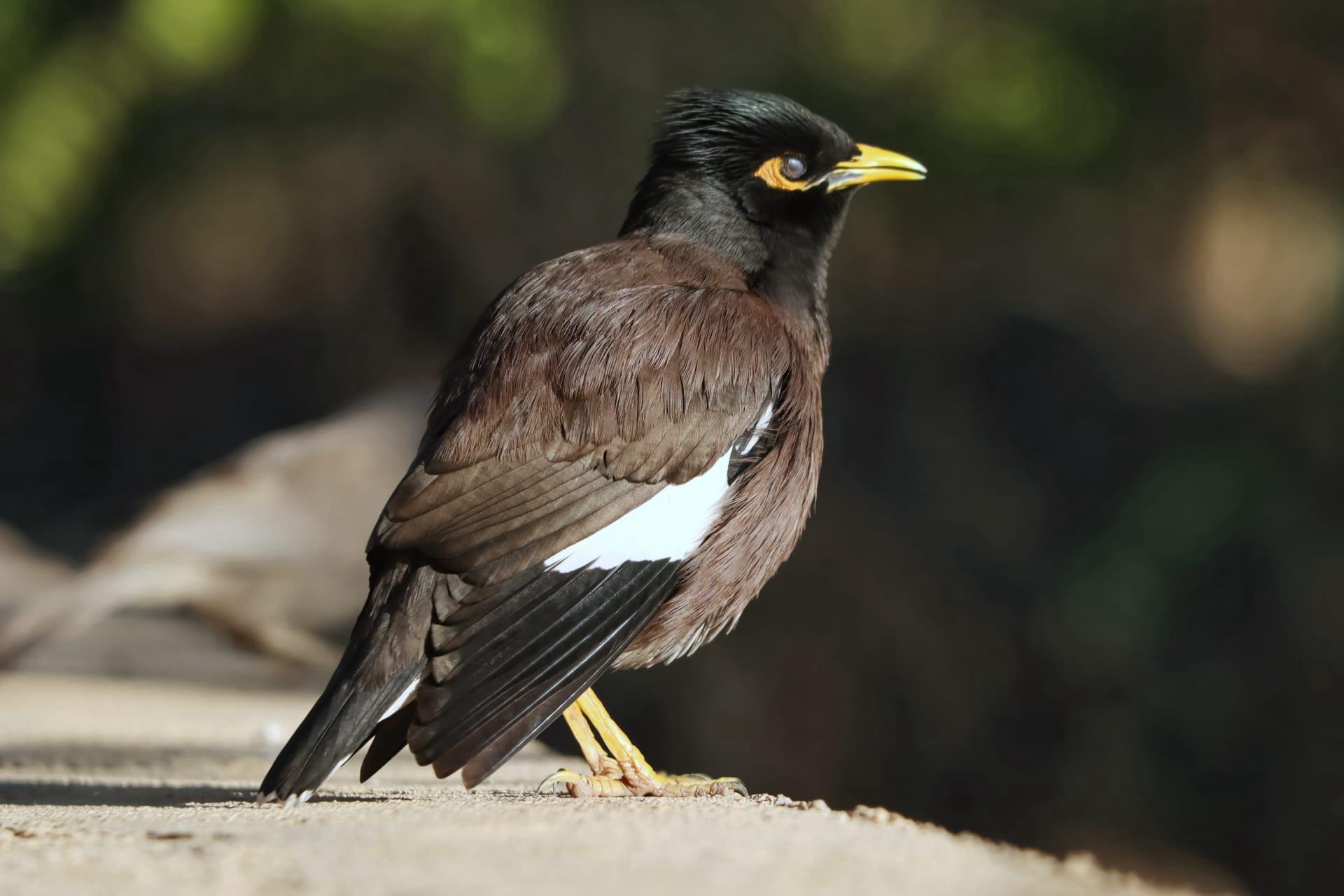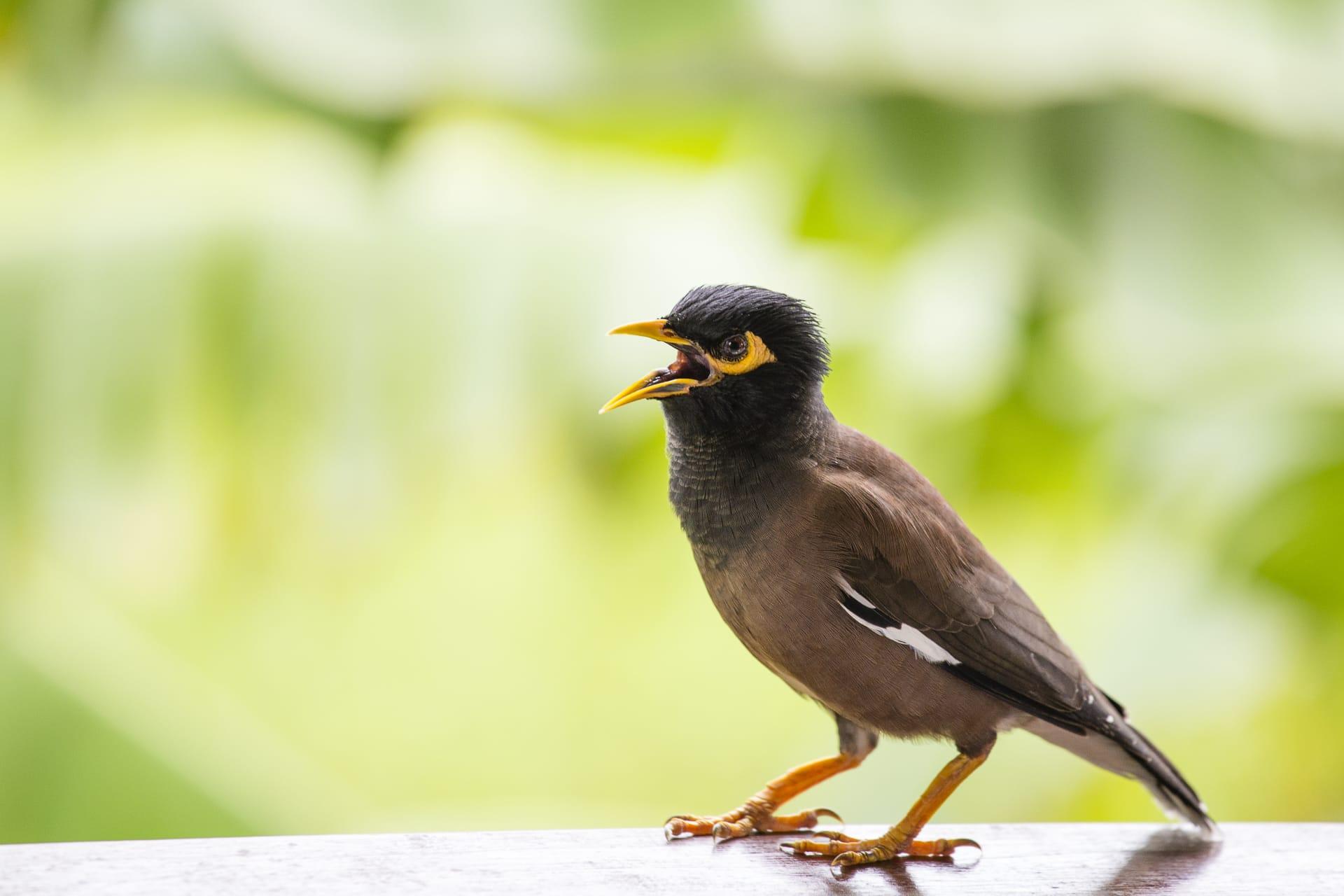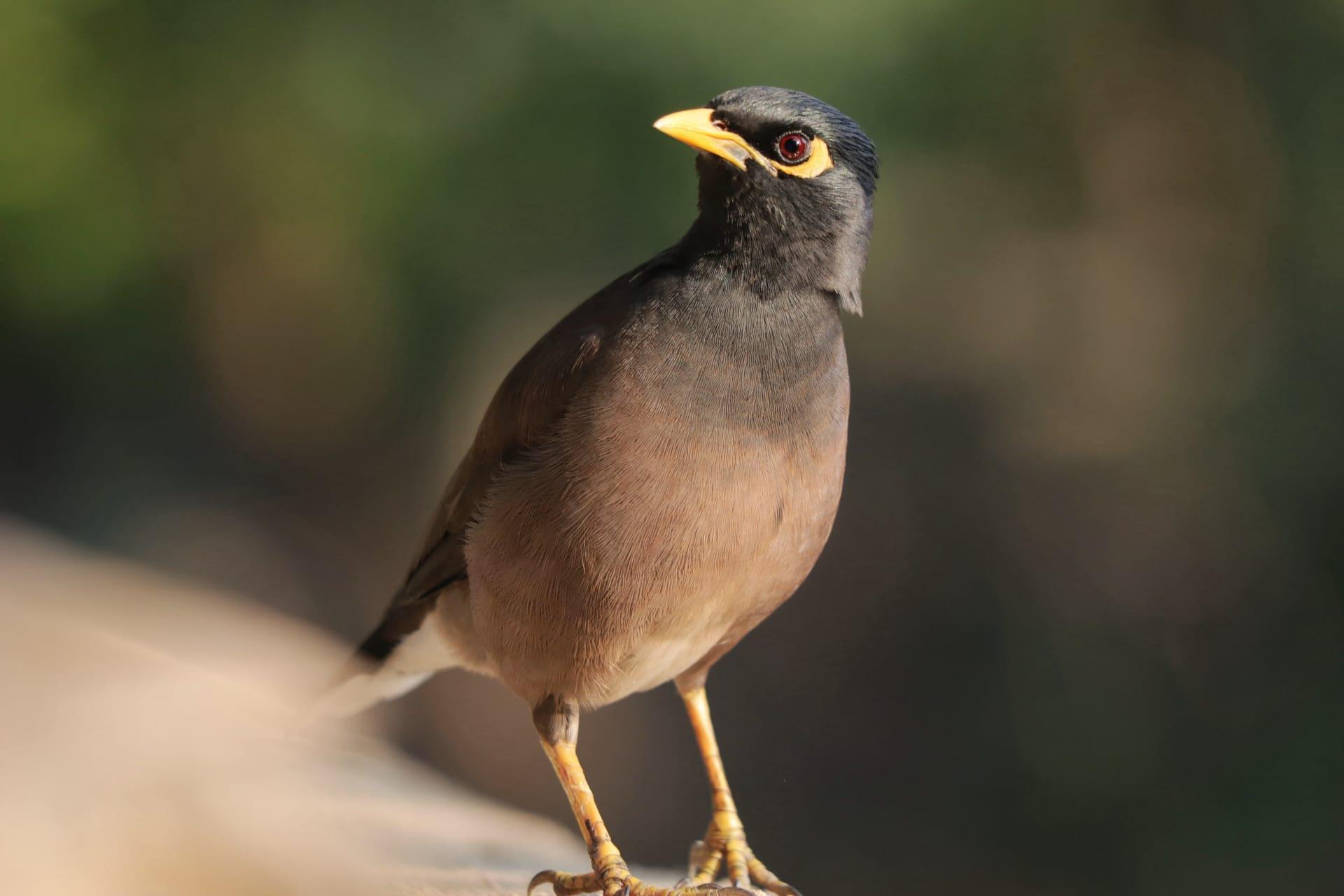Myna Trivia
- Home /
- Trivia Question /
- Animal /
- Myna Trivia
1
Question: How intelligent are Mynas compared to other birds?
Answer: Mynas are remarkably intelligent, often compared to parrots in their cognitive abilities. These birds can learn and mimic human speech with astonishing clarity. A study showed that Mynas can memorize and repeat words and short phrases after hearing them just a few times. This ability not only demonstrates their auditory learning skills but also their capacity for complex vocal communication.
Question: What is the distinctive physical feature of Mynas?
Answer: One of the most striking features of Mynas is their bright yellow beak and eye patches, which starkly contrast with their primarily dark plumage. This vivid yellow coloration becomes more pronounced as they age. Adult Mynas typically measure about 23 centimeters in length and have a wingspan of approximately 120 centimeters, making them medium-sized birds with a robust and noticeable presence.

2
Question: Is it true that Mynas are only found in urban areas?
Answer: Contrary to popular belief, Mynas are not exclusively urban birds. While they are often seen in cities due to their adaptability, they naturally inhabit a variety of environments, including forests, grasslands, and even mountainous regions. Their ability to thrive in diverse habitats is a testament to their versatility and resilience as a species.
Question: Do Mynas make good pets?
Answer: While Mynas are known for their ability to mimic human speech, they are not always ideal pets. They require a lot of social interaction and mental stimulation, making them a challenging commitment. In the wild, Mynas are highly social and thrive in groups, so solitary confinement can lead to stress and behavioral issues. Additionally, their loud calls and need for spacious living conditions can be challenging for many pet owners.

3
Question: What do Mynas eat?
Answer: Mynas have a diverse diet, primarily consisting of insects, fruits, and nectar. They are opportunistic feeders and often adapt their diet based on available food sources. In urban areas, they are known to consume human food waste, demonstrating their adaptability. Mynas play a crucial role in seed dispersal and pest control in their natural habitats.
Question: How do Mynas communicate with each other?
Answer: Mynas have a complex system of vocalizations to communicate. They use a variety of calls, songs, and mimicry to convey different messages, such as warning of predators, signaling food sources, or attracting mates. Their vocal range is impressive, with some species capable of producing over 100 different sounds. These sounds vary in pitch, length, and tone, allowing for intricate and nuanced communication.

4
Question: What is the lifespan of a Myna in the wild?
Answer: In the wild, Mynas typically live for about 5 to 8 years, although some individuals have been known to live longer. Factors affecting their lifespan include habitat conditions, availability of food, and predation risks. In captivity, with proper care, Mynas can live up to 12 years or more, reflecting the impact of a controlled environment on their health and longevity.
Question: Are Mynas monogamous?
Answer: Yes, Mynas are generally monogamous birds, forming long-term pair bonds with a single mate. During the breeding season, they work together to build nests, usually in tree hollows or crevices in buildings. Both parents participate in incubating the eggs and feeding the chicks, demonstrating a high level of parental care and cooperation.

5
Question: How do Mynas impact local ecosystems?
Answer: Mynas can have both positive and negative impacts on local ecosystems. Positively, they help in seed dispersal and insect control. However, in some regions, they are considered invasive species, competing with native birds for food and nesting sites, and sometimes even displacing them. Their adaptability and aggressive behavior can disrupt local bird populations and biodiversity.
Question: Can Mynas change their behavior based on their environment?
Answer: Absolutely, Mynas are highly adaptable and can alter their behavior based on environmental factors. For instance, in urban areas, they learn to navigate traffic and human activity, and modify their feeding habits to include food scraps. In more natural settings, they revert to foraging for insects and fruits. This behavioral flexibility is a key factor in their survival and success in varied habitats.